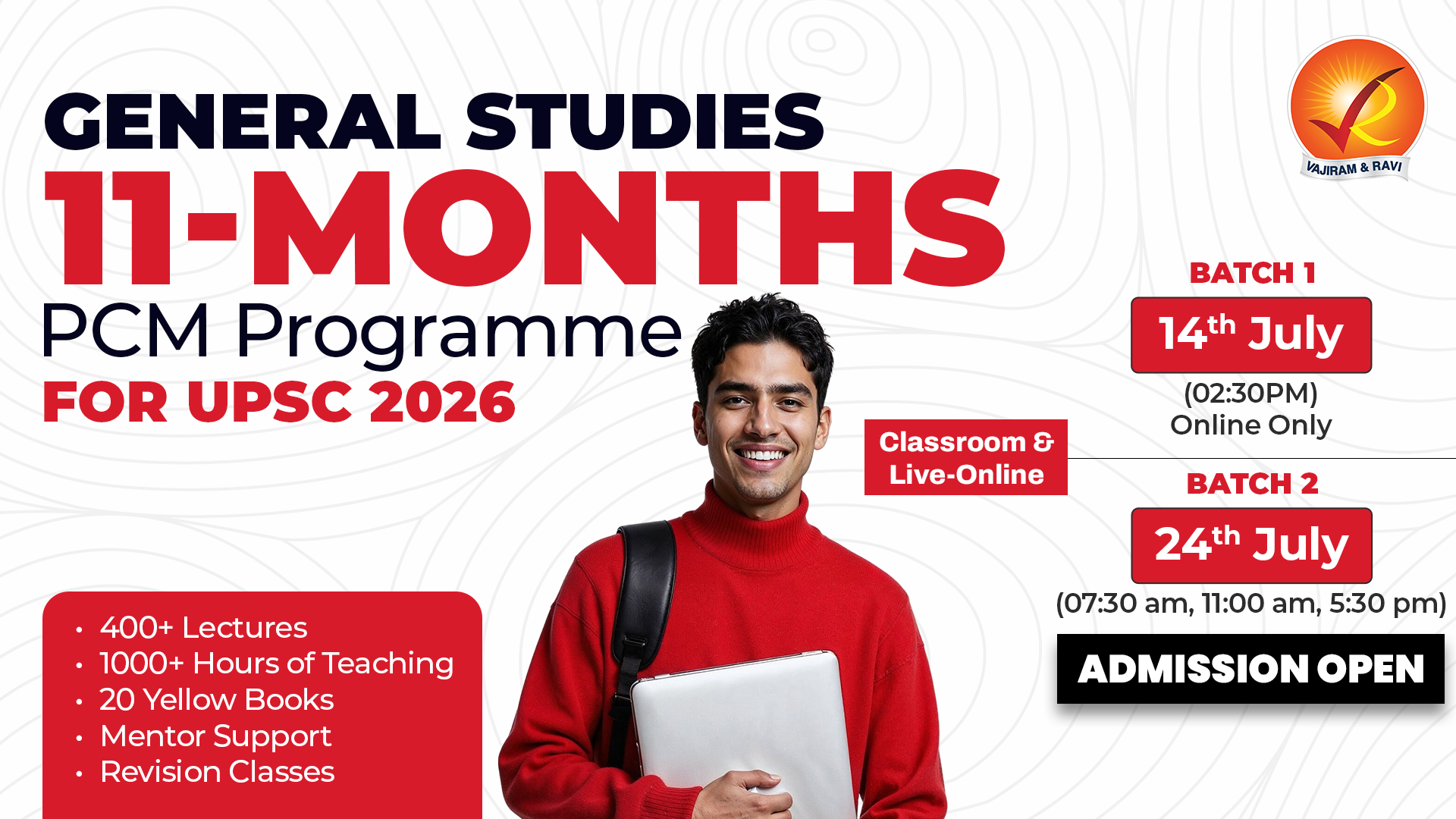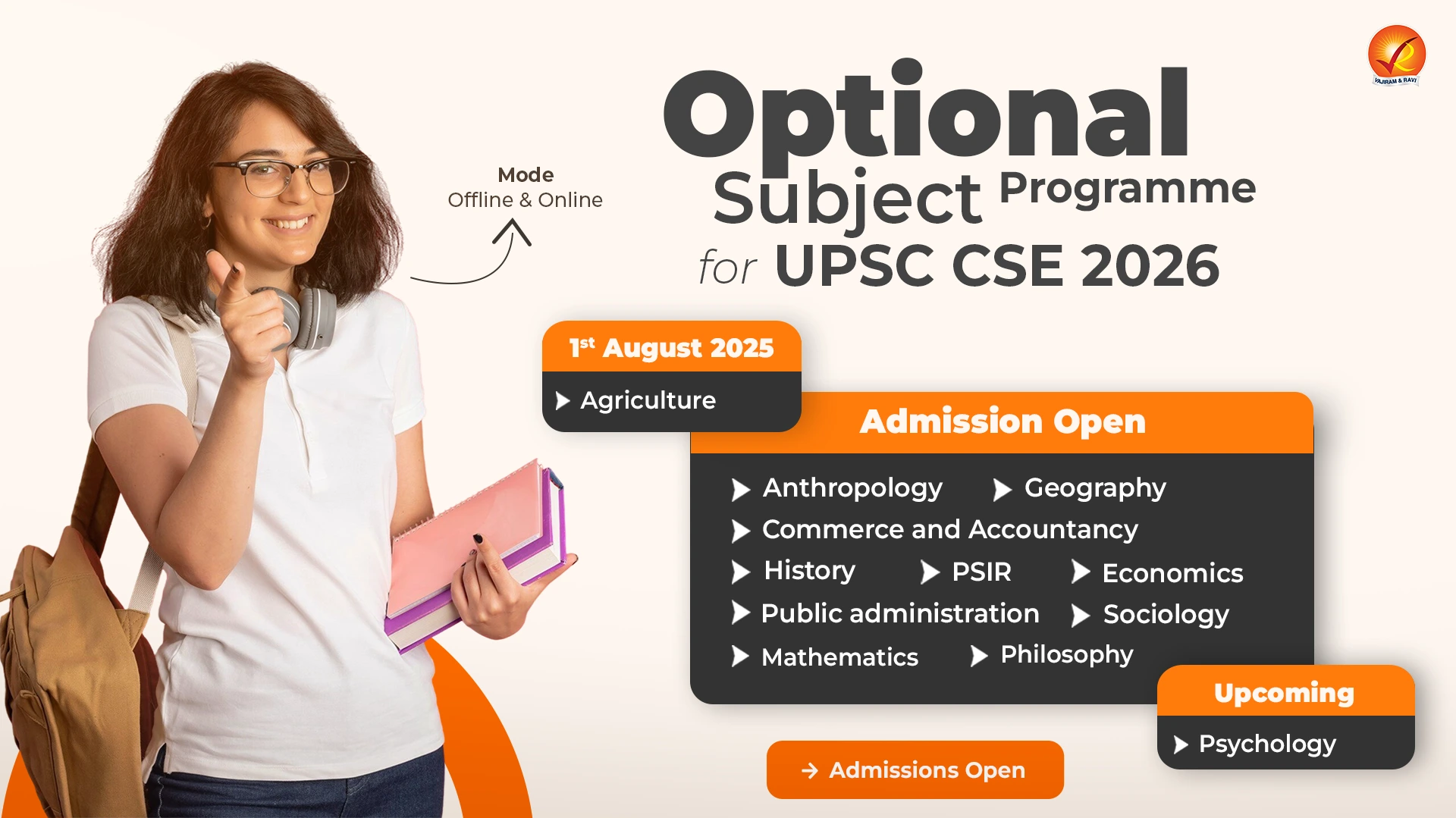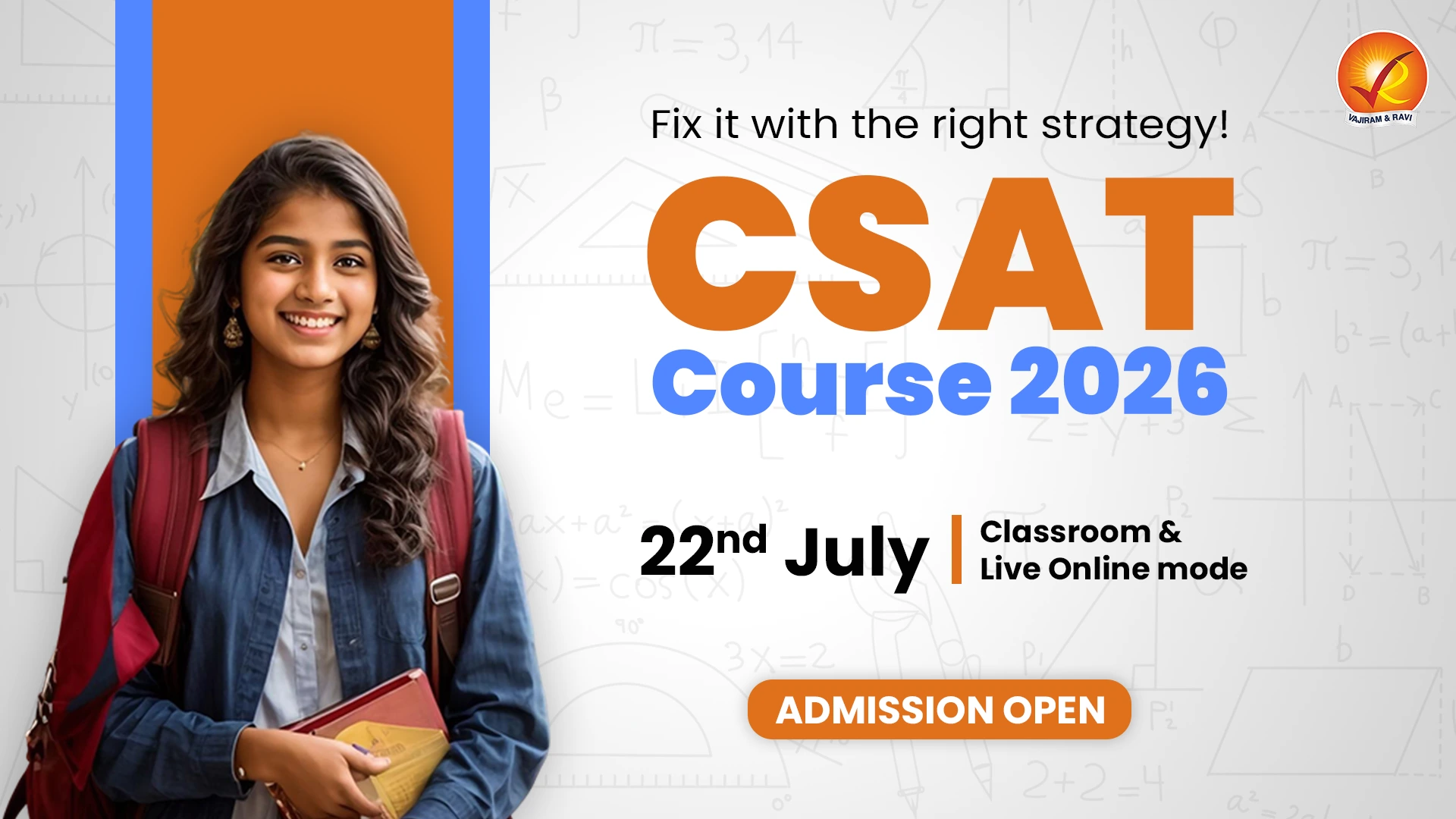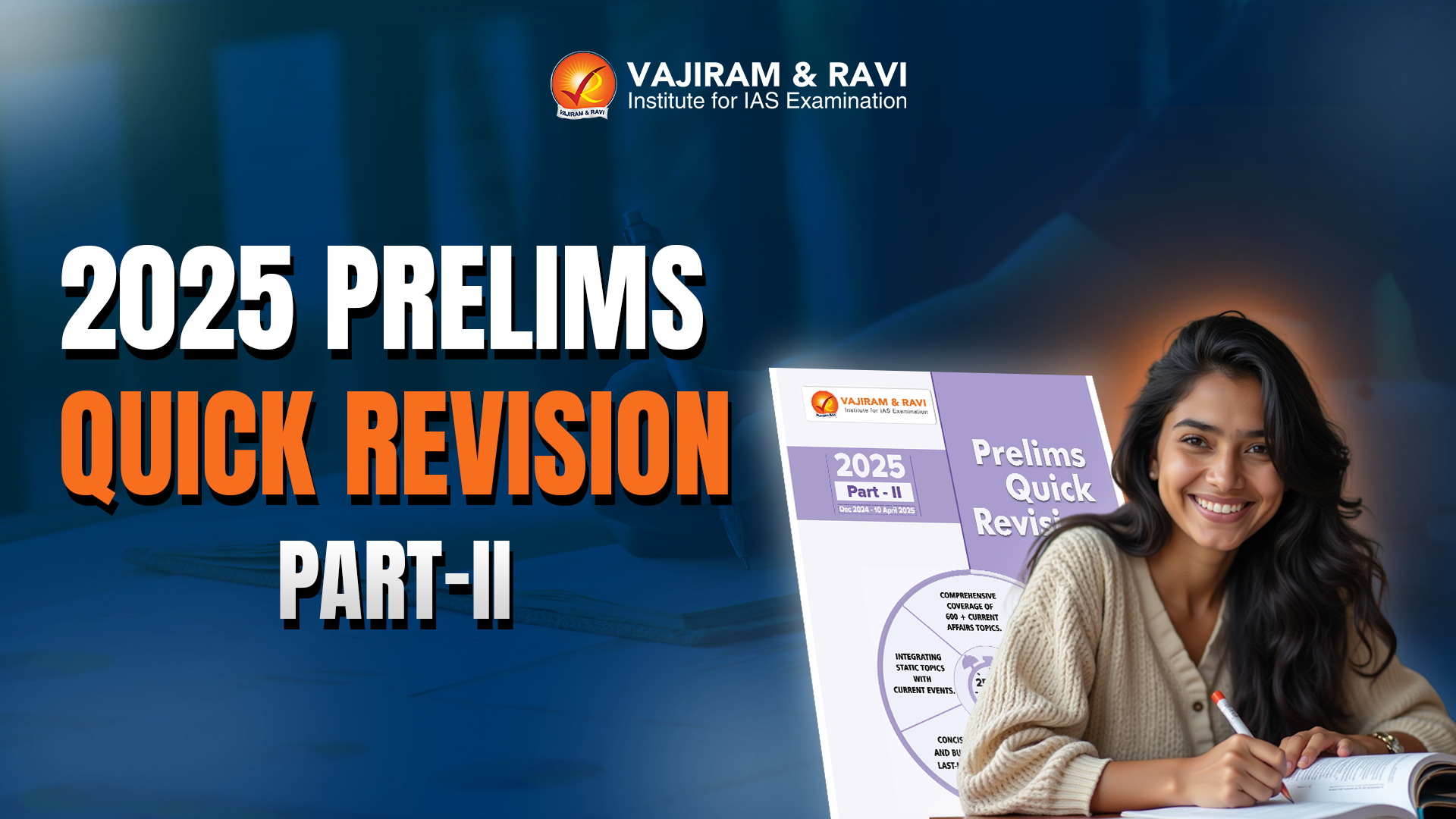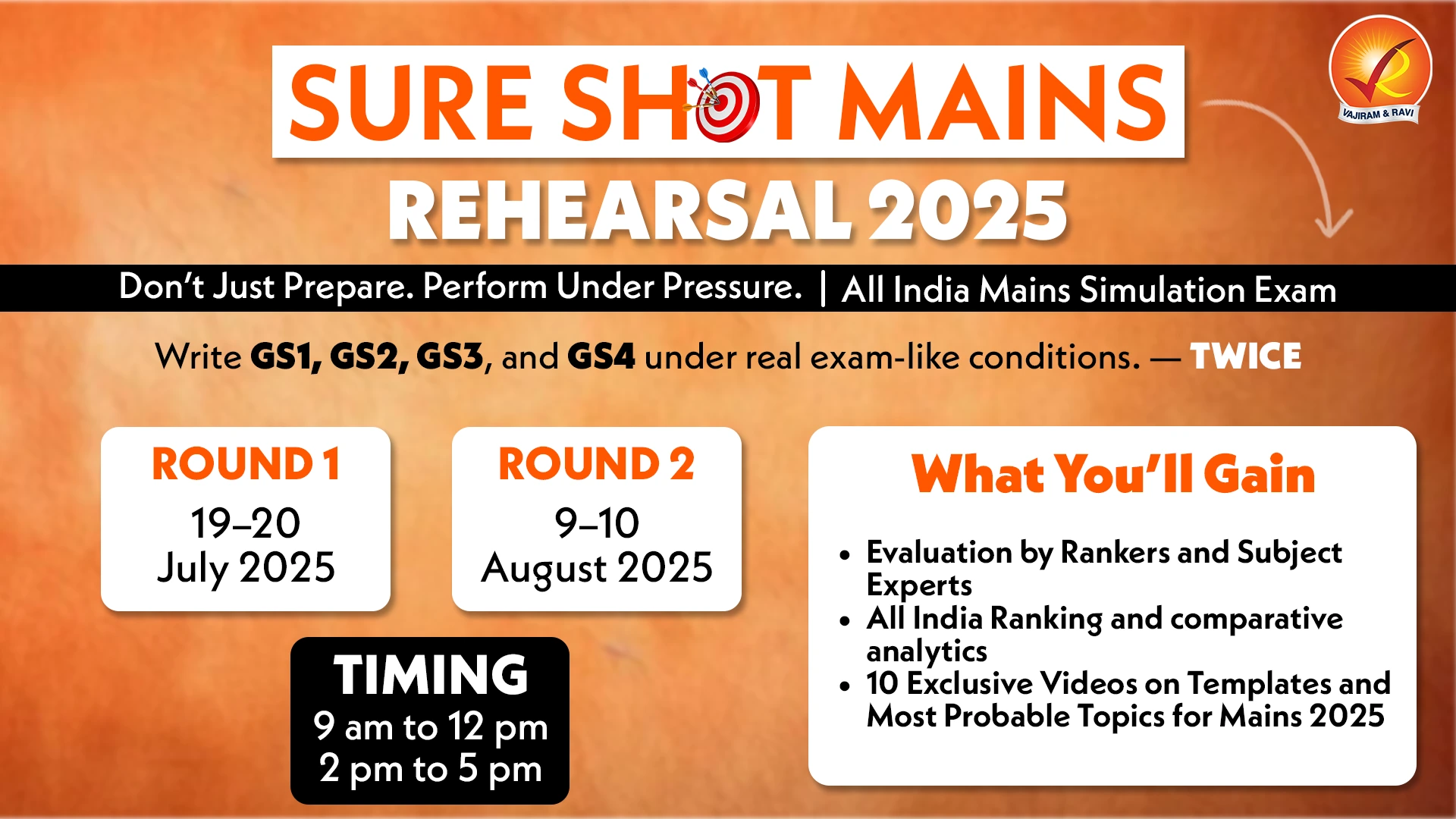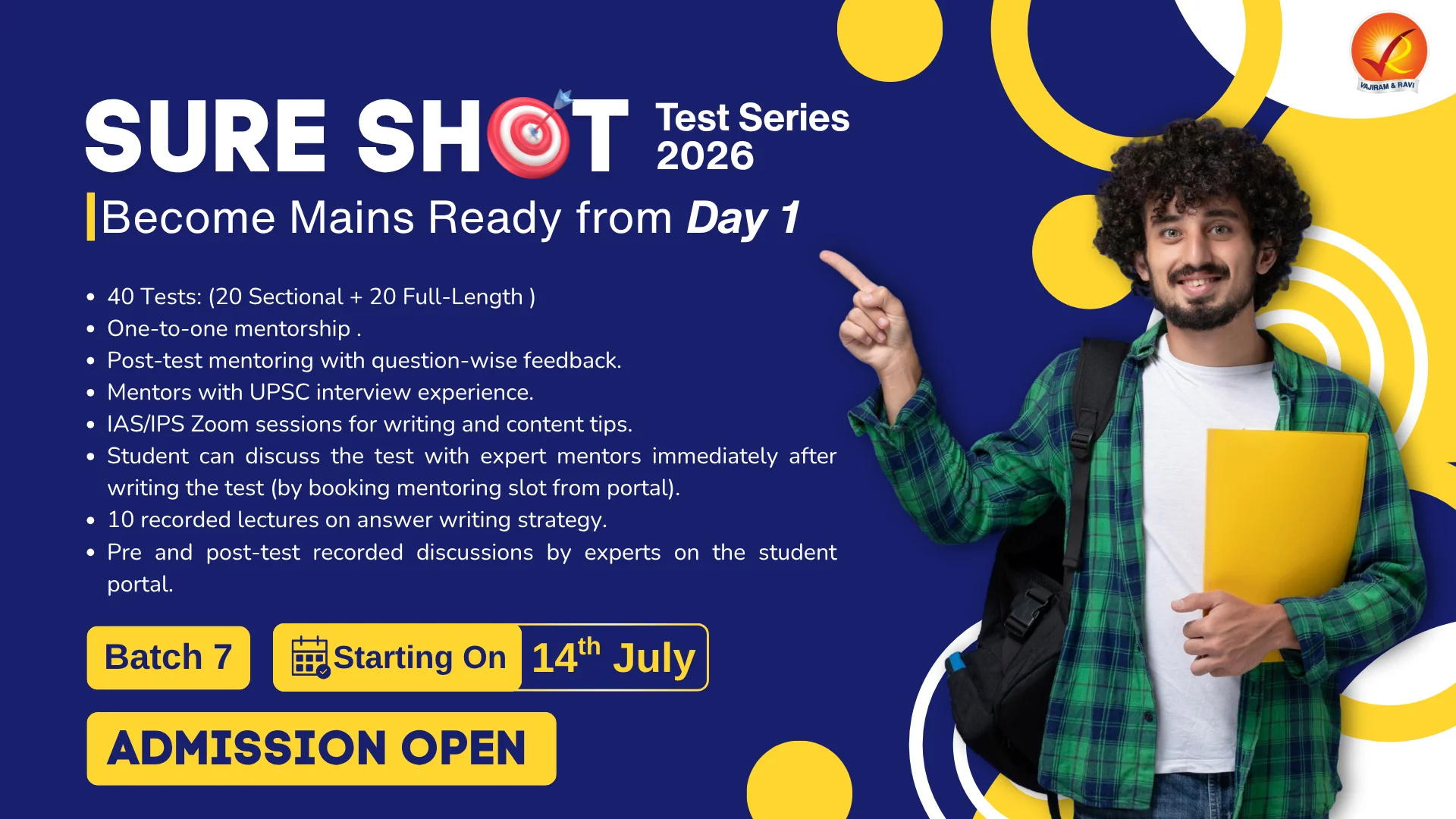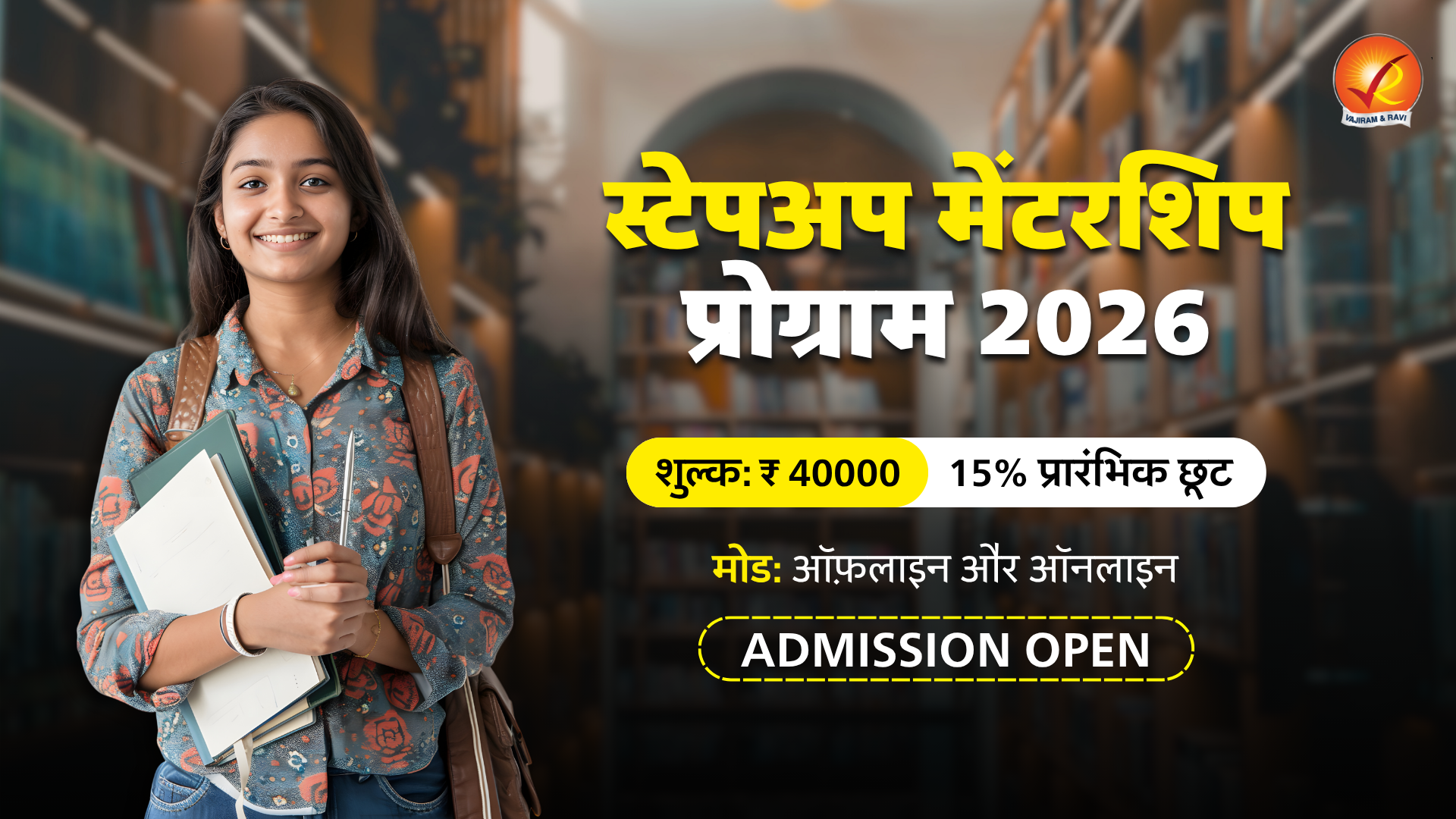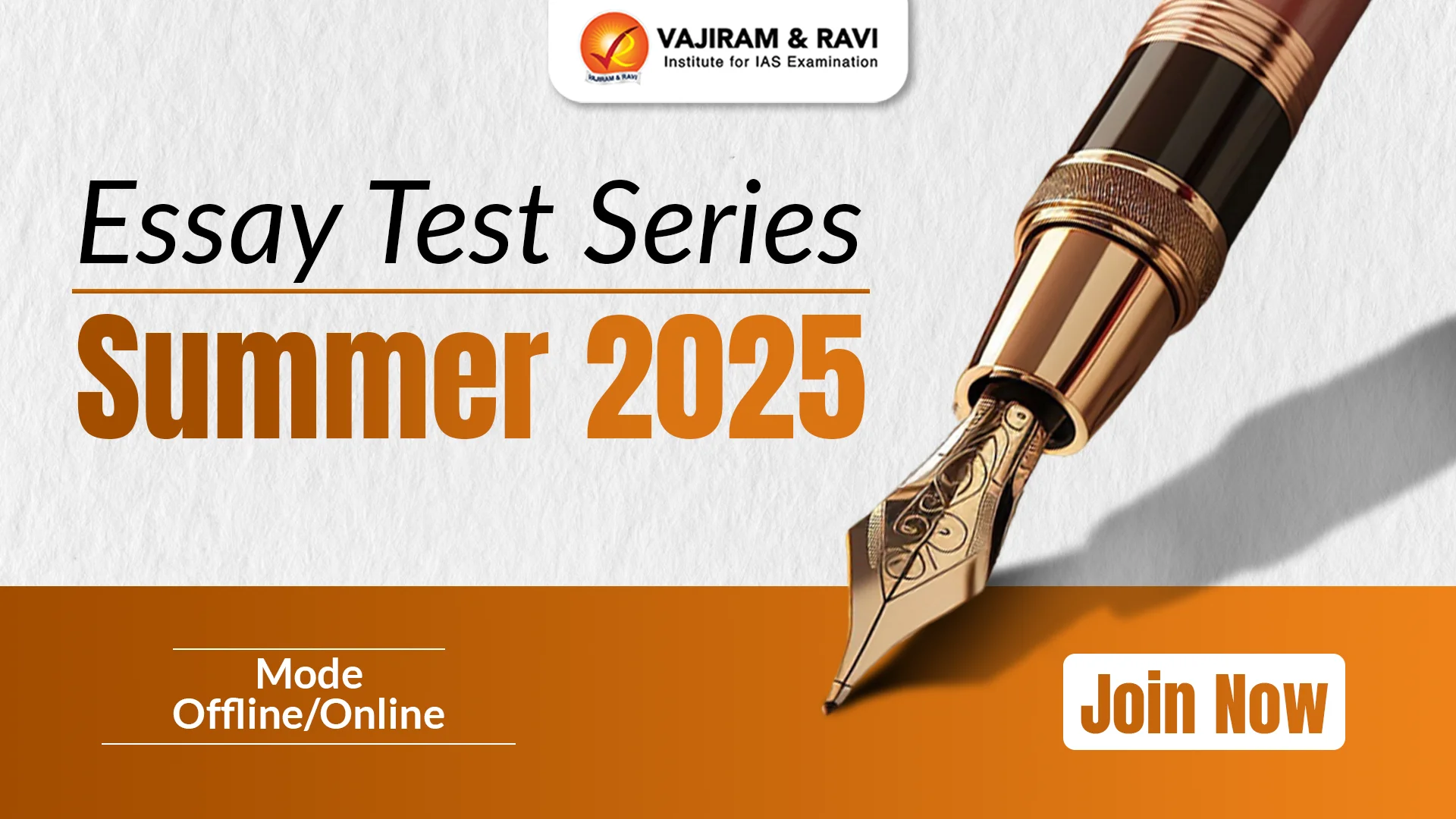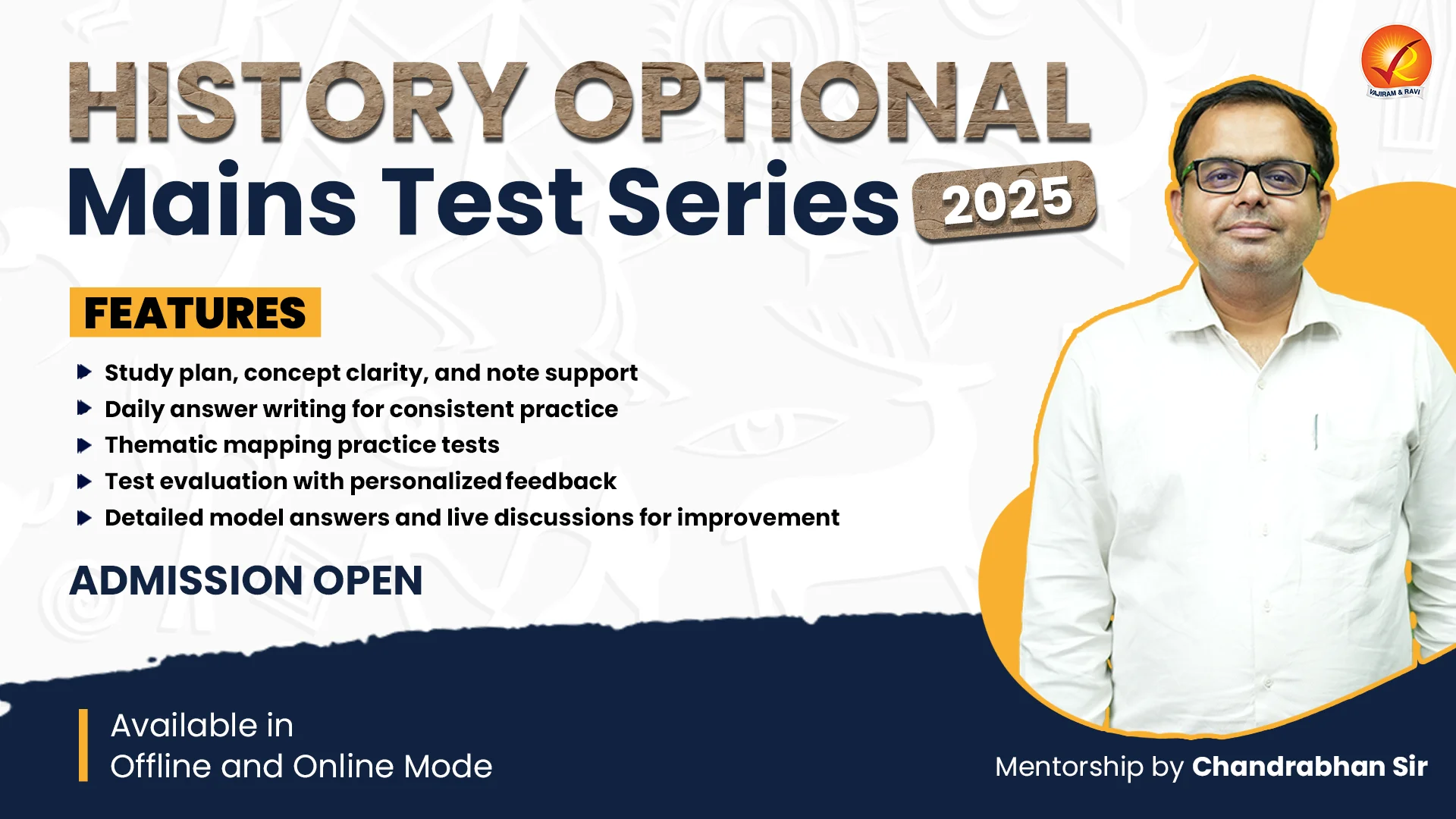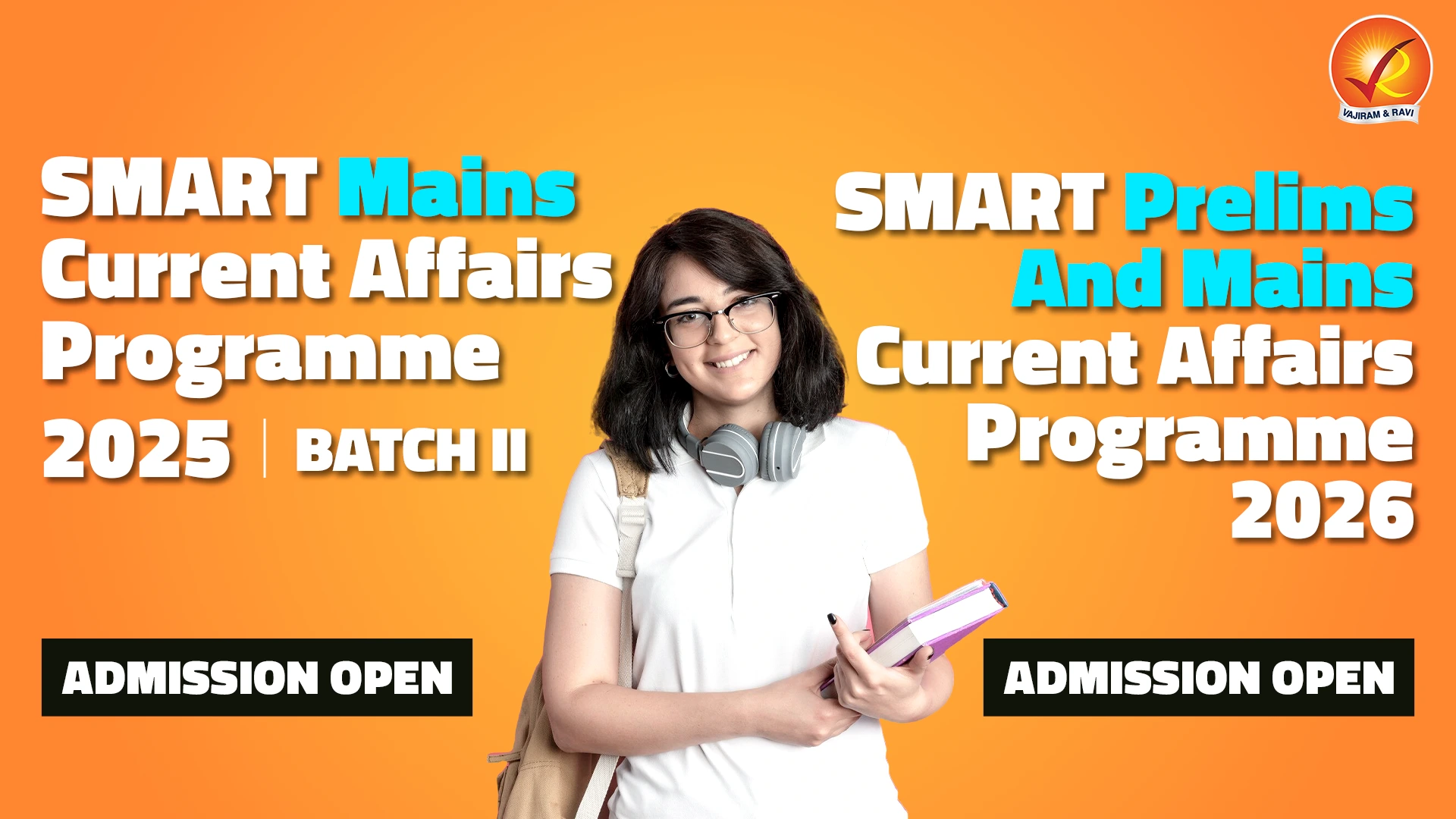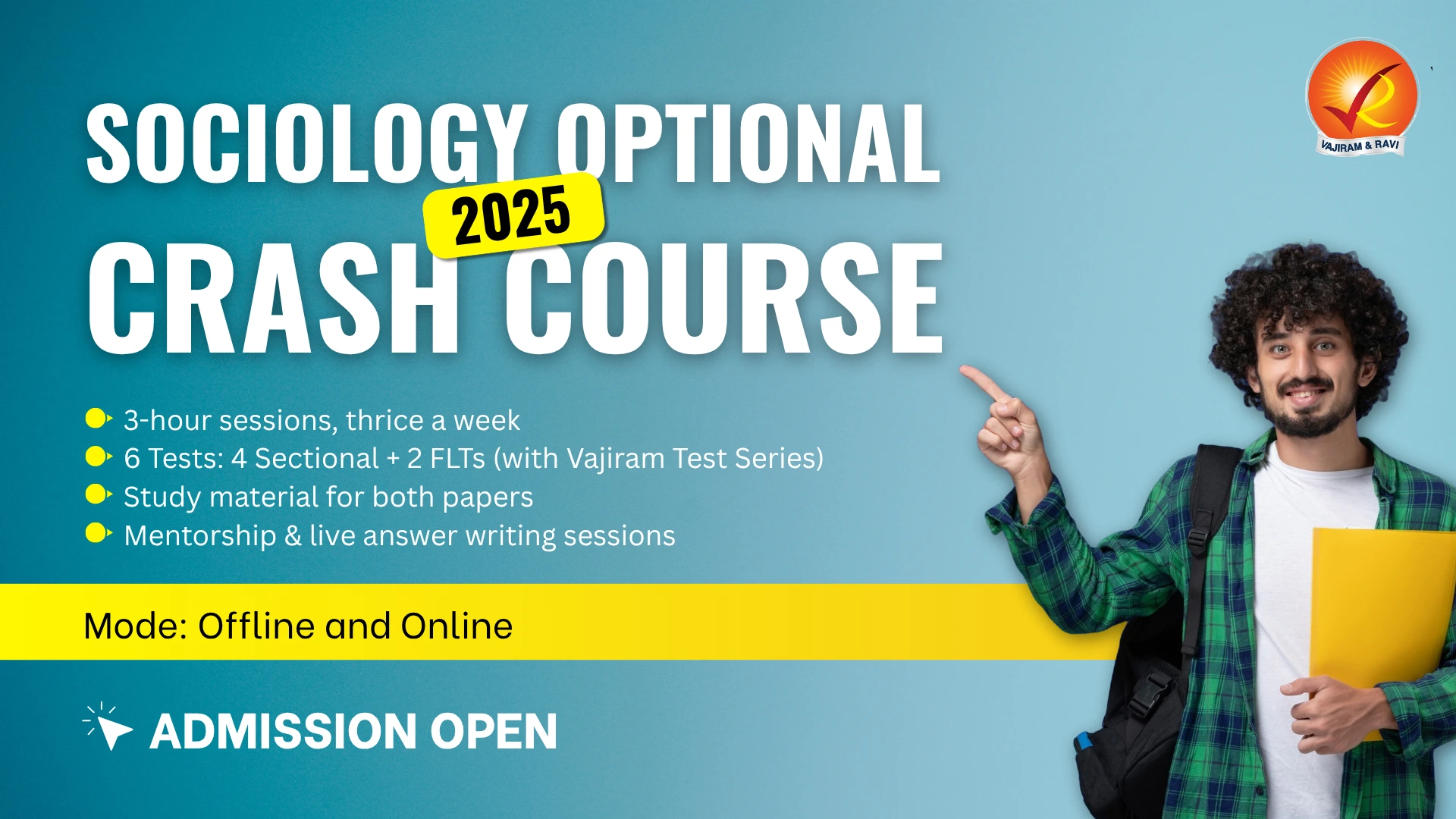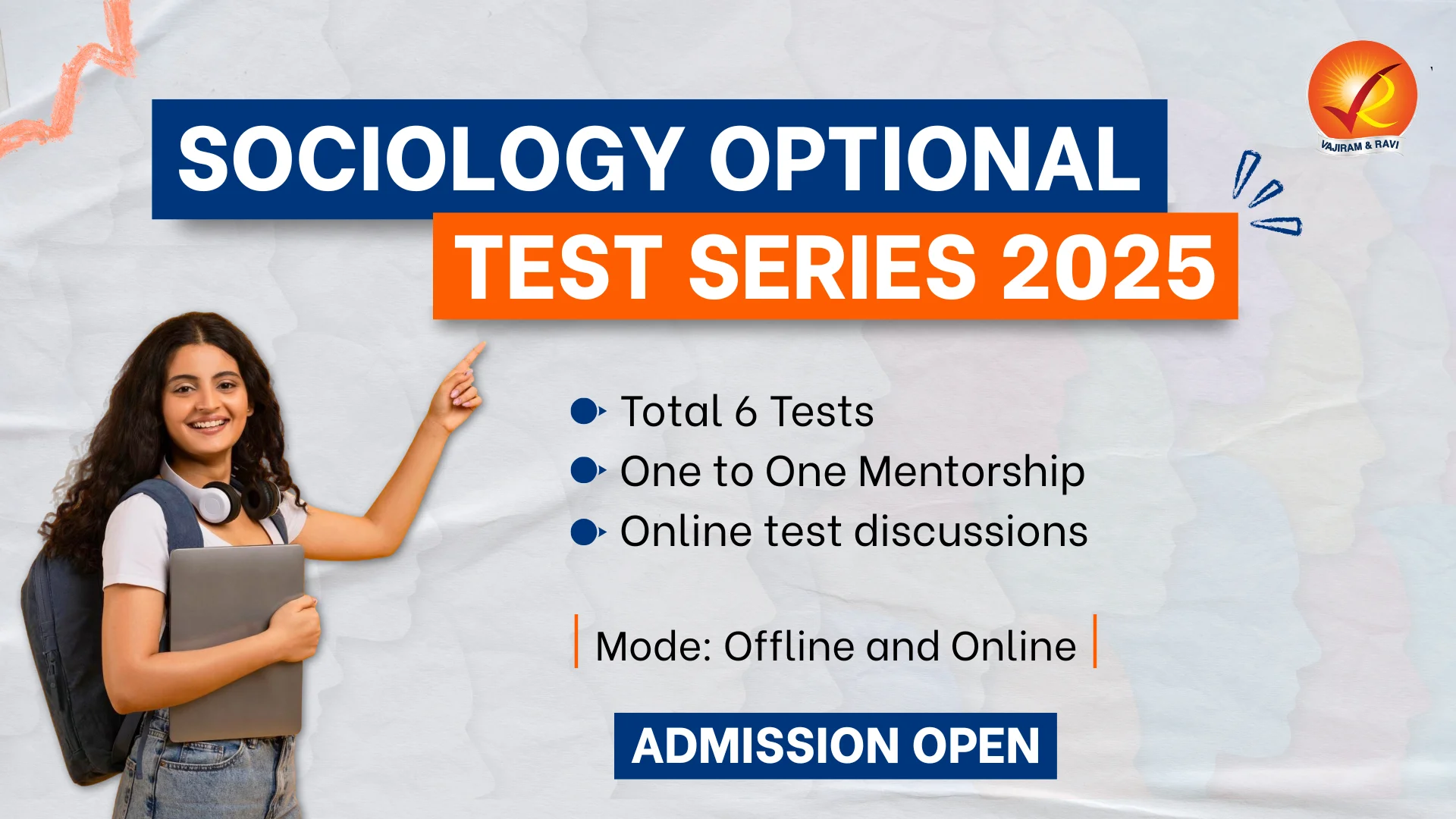Upcoming Mentoring Sessions
RMS - Economy 11 - Infrastructure
RMS - Art & Culture 3
RMS - Polity 7 - Parliament 3
RMS - Geography - Indian Physiography - 2
RMS - Economy 10 - Agriculture
RMS - Polity 7 - Parliament 2
RMS - Geography - Indian Physiography
RMS - Polity 7 - Parliament 1
RMS -Economy 9 - Fundamentals of Indian Economy
RMS - Geography 5 - Major Landforms
RMS - Art & Culture 2
RMS - Geography 4 - Volcanoes, Volcanic Landforms and Rocks
RMS - Polity 6 - Judiciary 2
RMS - Economy 8 - Trade and Important Government Schemes
RMS - Geography 3 - Evolution of Oceans and Continents
RMS - Economy 7 - Inflation
RMS - Polity 6 - Judiciary 1
RMS - Geography 2 - Basic Concepts of Universe & Earth Interior
RMS - Art & Culture 1
RMS - Economy 6 - Balance of Payment
RMS - Geography 1 - Geomorphic Processes
RMS - Polity 5 - Constitutional & Non-Constitutional Bodies
Mentoring Session - UPSC Form Filling
RMS - Economy 5 - Financial Markets
RMS - Polity 4 - Fundamental Rights - P3
RMS - Economy 4 - Fiscal Policy and Budgeting
RMS - History 2 - From 1765 to 1858 - P2
RMS - Polity 4 - Fundamental Rights - P2
RMS - Economy 3 - Taxation
RMS - Polity 4 - Fundamental Rights-P1
RMS - History 1 - European Penetration to Battle of Buxar
RMS - Economy 2 - Money & Banking - P2
Mentoring Session (2024 - 25) - How to Write an ESSAY?
Social Issues Doubts and Mentoring Session
Ethics & Essay Doubts and Mentoring Session
Geography & Environment Doubts and Mentoring Session
History Doubts and Mentoring Session
Economy & Agriculture Doubts and Mentoring Session
Online Orientation Session
How to Read Newspaper and Make Notes?
Mains Support Programme 2025-(2)
Mains Support Programme 2025- (1)
Polity & International Relations Doubts and Mentoring Session
Mentoring Sessions (2024-25) - How to DO REVISION?
RMS - Polity - Parliament 3
Mentoring Sessions (2025-26) - How to Start Preparation?
RMS - Geography - World Mapping
RMS - Polity - Parliament 2
Prelims 2024 Strategy Session
RMS - Polity 3 - Union & its Territories and Citizenship
RMS - Geography - Major Landforms
RMS - Polity 2 - Preamble
RMS - Economy 2 - Money & Banking - P1
Mentoring Session (2024-25) - How to Make Notes?
RMS - Polity 1 - Constitution & its Salient Features
General Mentoring Session (GMS )
RMS - Modern History - Constitutional Developments - Important Acts in British India
Mentoring Session (2025-26) - How to write an Answer?
RMS - Economy 1 - Fundamentals of Economy and NIA
Current Affairs
July 18, 2025
Swachh Survekshan 2024-25 Awards
President of India recently conferred Swachh Survekshan 2024-25 Awards at Vigyan Bhagwan, New Delhi hosted by the Ministry of Housing and Urban Affairs (MoHUA).
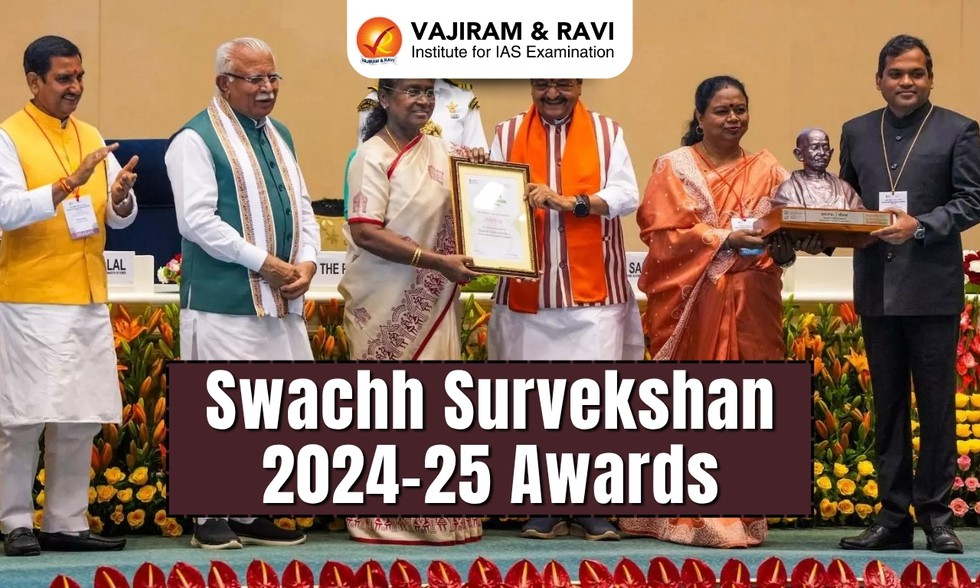
About Swachh Survekshan 2024-25 Awards:
- Marking its 9th edition, Swachh Survekshan 2024-25 is the world's largest urban cleanliness survey and a key pillar of the Swachh Bharat Mission-Urban.
- Highlights:
- In total, 78 awards were presented, recognising cities, cantonments, and institutions for their exemplary performance across a range of sanitation parameters.
- Indore, Surat, and Navi Mumbai have once again secured the top spots in urban sanitation, emerging as the cleanest cities in the Swachh Survekshan 2024-25 rankings.
- The three cities were ranked first, second, and third, respectively, in the newly introduced “Super Swachh League,” which recognises sustained excellence in cleanliness. Vijayawada followed closely, securing the fourth position.
- This year’s Swachh Survekshan introduced a simplified and inclusive assessment framework, enabling smaller cities to compete on equal footing with larger counterparts under the principle of “One City, One Award.”
- As a result, 34 cities from various States and Union Territories were declared Promising Swachh Shehars for their notable progress in sanitation and urban cleanliness.
- Ahmedabad, Bhopal, and Lucknow were declared the new generation of top clean cities, emerging as India’s leading Swachh Shehars.
- Prayagraj was honoured as the Best Ganga Town, while Secunderabad Cantonment Board was awarded for its strong sanitation efforts.
- Visakhapatnam, Jabalpur, and Gorakhpur received recognition as the Best SafaiMitra Surakshit Shehars for prioritising the safety, dignity, and welfare of sanitation workers.
- A special award was conferred upon the Government of Uttar Pradesh, the Prayagraj Mela Adhikari, and the Municipal Corporation of Prayagraj for successfully managing urban waste during the Mahakumbh, which saw a record footfall of approximately 66 crore people.
Polity & Governance
Current Affairs
July 18, 2025
Poshan Tracker App
Anganwadi workers struggle to register beneficiaries on the Poshan Tracker app due to technical glitches and connectivity issues.
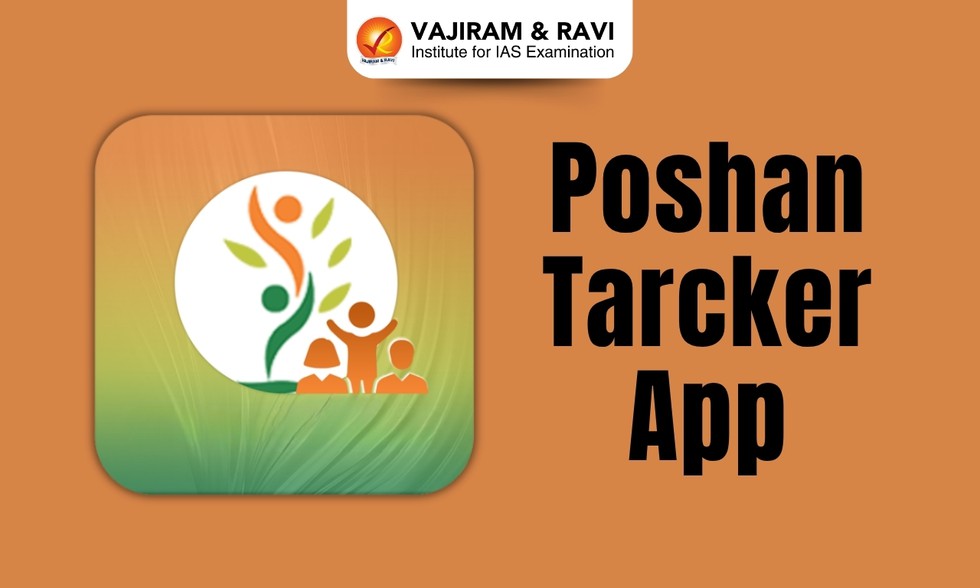
About Poshan Tracker App:
- It is a mobile-based application rolled out by the Ministry of Women and Child Development, Government of India on 1st March 2021.
- It was developed by the National eGovernance Division.
- It serves as a specialized digital platform for Anganwadi Centers (AWCs), Anganwadi Workers (AWWs), and enrolled beneficiaries, aiming to enhance nutrition service delivery and support the government’s fight against malnutrition.
- The app provides mechanisms for direct data capture, status tracking, and reporting, making it a pivotal tool in the implementation of the Poshan Abhiyaan initiative.
- Access to Poshan Tracker is limited to designated users, including government-authorized staff and registered beneficiaries.
- It facilitates real-time updates on nutrition indicators covering children, pregnant women, and lactating mothers.
- Anganwadi workers can record individual attendance, distribute supplements, and update health parameters directly from the field.
- Government authorities receive timely insights into resource usage, stock availability, and beneficiary outreach, allowing for improved decision-making and prompt intervention.
What is the Poshan Abhiyaan Initiative?
- It is a multi-ministerial initiative launched by the Government of India in March 2018.
- The focus of Abhiyaan is to lay emphasis on the nutritional status of adolescent girls, pregnant women, lactating mothers, and children from 0-6 years of age.
- The programme, through the use of technology, convergence, and community involvement with a targeted approach, strives to reduce the level of stunting, undernutrition, anaemia, and low birth weight in children, as also focus on adolescent girls, pregnant women and lactating mothers, thus holistically addressing malnutrition.
- Objectives:
- Prevent and reduce stunting in children (0- 6 years).
- Prevent and reduce undernutrition (underweight prevalence) in children (0-6 years).
- Reduce the prevalence of anaemia among young children (6-59 months).
- Reduce the prevalence of anaemia among women and adolescent girls in the age group of 15-49 years.
- Reduce Low Birth Weight (LBW).
Polity & Governance
Current Affairs
July 18, 2025
What is Chronic Venous Insufficiency (CVI)?
US President Donald Trump has been recently diagnosed with Chronic Venous Insufficiency (CVI).

About Chronic Venous Insufficiency (CVI):
- The CVI occurs when your leg veins struggle to allow the flow of blood back to the heart.
- Under normal conditions, the valves in our veins facilitate the flow of blood towards the heart.
- However, when they don't work on the optimum level, the blood may flow backwards and accumulate (pool) in your legs.
- The condition may not be a serious health threat, but it can cause pain, swelling, cramps, skin changes, varicose veins, leg ulcers,
- People are more likely to have the condition if/when they are overweight or pregnant or have a family history of the problem.
- People may also experience it if they have ever sustained an injury to their leg, had surgery, or had previous blood clots.
- It affects about 1 in 20 adults. Common among older adults, its risk heightens with age.
- Treatments:
- From lifestyle changes to surgery, there are multiple ways to address the issue.
- Regular exercise, leg elevation, and weight management are considered the first steps to treat the condition.
- Medicines that boost blood flow through the vessels and compression therapy, which involves tight stockings or bandages, help a long way.
Science & Tech
Current Affairs
July 18, 2025
What is a Protostar?
A team of researchers at the IIST, Thiruvananthapuram, recently discovered radio emission with a special property known as circular polarisation near a massive young protostar that is still forming about 4,500 light-years from Earth.
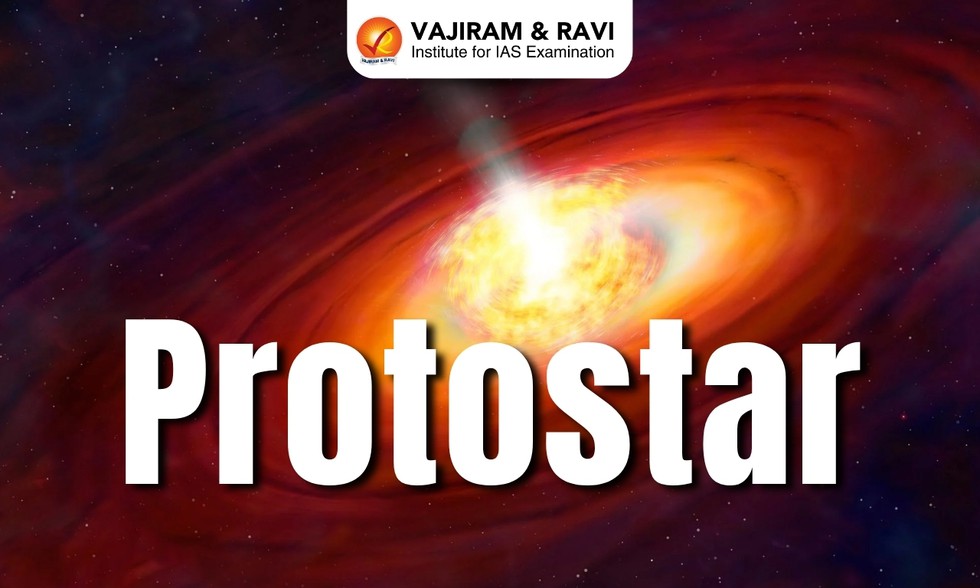
About Protostar:
- A protostar is an early stage in the star formation
- It is a large mass of gas and dust formed as a result of the contraction of a giant molecular cloud in the interstellar medium.
- As the cloud collapses, gravitational energy is converted into heat, warming the still-forming protostar.
- It may last from 100,000 to 10 million years, depending on the mass of the star.
- It begins with an increase in density in the molecular cloud core and ends with the formation of a pre-main-sequence star.
- Pre-main-sequence stars of similar mass to the Sun are known as T-Tauri stars.
- Once hydrogen fusion ignites in the core of a star, it begins producing energy and becomes a main sequence star.
- Protostars are usually surrounded by dust, which blocks the light that they emit, so they are difficult to observe in the visible spectrum.
Science & Tech
Current Affairs
July 18, 2025
Reykjanes Peninsula
A volcano erupted recently in Iceland's Reykjanes peninsula in the southwest, weather authorities said, the ninth eruption to hit the region since the end of 2023.
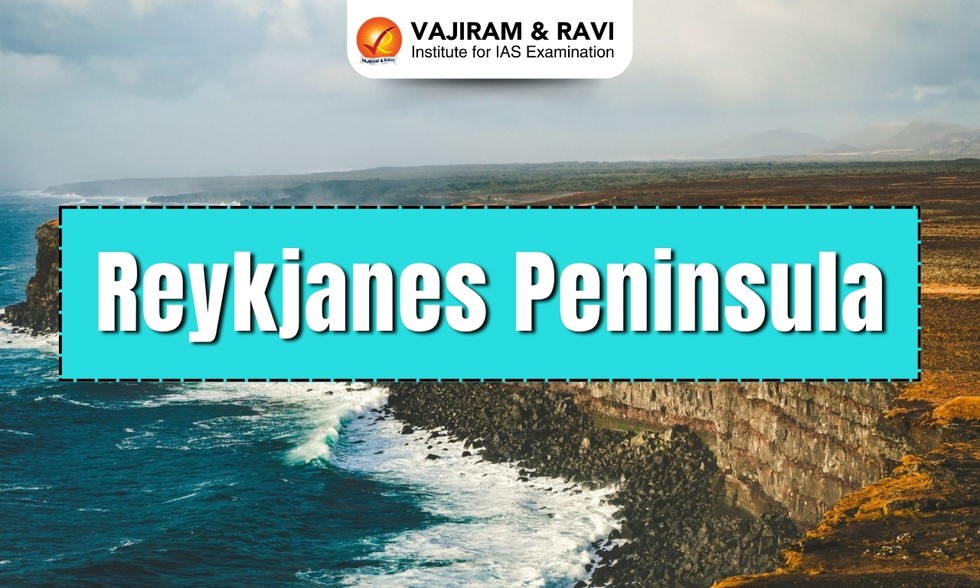
About Reykjanes Peninsula:
- Reykjanes is a peninsula in southwest Iceland, characterized by immense lava fields, volcanoes, and heightened geothermal activity.
- It covers an area of 829 sq.km.
- The peninsula is where the Mid-Atlantic Ridge rises above sea level, creating a dynamic landscape where the North American and Eurasian tectonic plates meet.
- Due to this geological setting, the whole peninsula is extremely volcanically active, covered with moss-coated lava fields and cone-shaped mountains.
- Since 2021, the Reykjanes Peninsula has seen a marked increase in volcanic activity, with eruptions occurring frequently.
- There are frequent earthquakes due to the movement of the tectonic plates, but are commonly minor events that can hardly be felt by humans.
- The peninsula is quite sparsely populated, with the exception of the capital area of Reykjavik, which is the largest city on the peninsula.
- It is also the site of the Reykjanes Geopark, a UNESCO Global Geopark, which showcases the area’s unique geological features, including fissures, lava fields, hot springs, and volcanic craters.
- The Gunnuhver Geothermal Field is among the biggest geothermal fields on the peninsula.
Geography
Current Affairs
July 18, 2025
Hydrogen Peroxide
Recently, scientists have developed a novel approach for using a cutting-edge material called Mo-DHTA COF, short for dimolybdenum paddlewheel-embedded covalent organic framework for synthesizing hydrogen peroxide (H2O2) directly from water and sunlight.
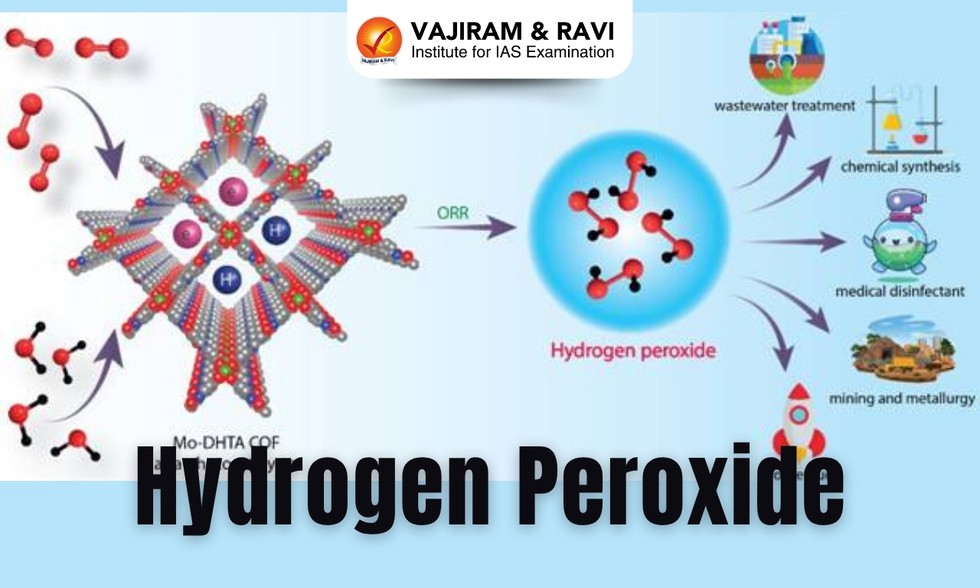
About Hydrogen Peroxide:
- It is a colorless liquid at room temperature with a bitter taste.
- Small amounts of gaseous hydrogen peroxide occur naturally in the air.
- Features of Hydrogen Peroxide:
- It is known for its eco-friendly nature of degrading or breaking down into only water and oxygen.
- Hydrogen peroxide is unstable, decomposing readily to oxygenand water with release of heat.
- It is nonflammable; it is a powerful oxidizing agent that can cause spontaneous combustion when it comes in contact with organic material.
- Hydrogen peroxide is found in many households at low concentrations (3-9%) for medicinal applications and as a clothes and hair bleach.
- It is a key component in sustainable chemical processes. However, its conventional production methods are energy-intensive, environmentally hazardous, and costly.
- Applications of Hydrogen Peroxide
- It is a vital oxidizing agent with broad applications in chemical synthesis, sterilization, wastewater treatment, and fuel cells.
- In industry, hydrogen peroxide in higher concentrations is used as a bleach for textiles and paper, as a component of rocket fuels, and for producing foam rubber and organic chemicals.
Science & Tech
Current Affairs
July 18, 2025
Mount Kilimanjaro
Recently, the Defence Secretary formally flagged off mountaineering expeditions to Mount Everest and Mount Kilimanjaro at an event organised in South Block, New Delhi.
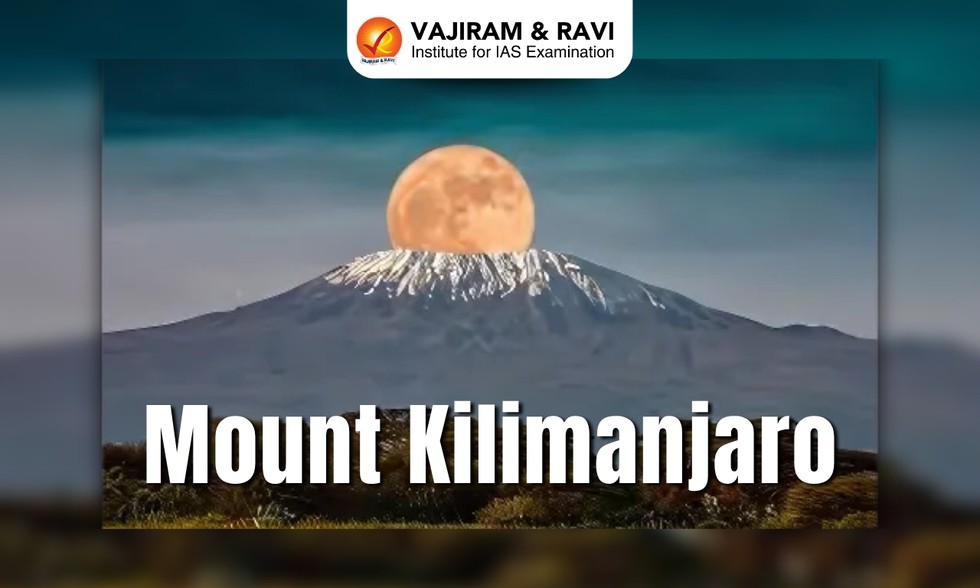
About Mount Kilimanjaro:
- It is Africa’s tallest mountain and the world’s largest free-standing mountain (which means not part of a mountain range).
- Location: It is located in northeastern Tanzania, near the Kenya border.
- It extends approximately east-west for 50 miles (80 km).
- Also called a stratovolcano, Kilimanjaro is made up of three cones: Kibo, Mawenzi, and Shira.
- Among these cones is Kibois, the tallest of the three volcanic formations, which is also a dormant volcano, while the other two are extinct volcanoes.
- Uhuru Peak, the highest free-standing peak in Africa, is located on the volcanic cone Kibo.
- Kilimanjaro is also known for its snow-capped peak.
- Vegetation: The mountain has five main vegetation zones, from the lowest to the highest point: Lower slopes, montane forest, heath and moorland, alpine desert, and summit.
- The Kilimanjaro National Park was named a United Nations Educational, Scientific, and Cultural Organization (UNESCO) World Heritage Site in 1987.
Geography
Current Affairs
July 18, 2025
Trade Connect ePlatform
The Directorate General of Foreign Trade (DGFT), Ministry of Commerce and Industry, participated in two major B2B trade exhibitions this month to enhance awareness and adoption of the Trade Connect ePlatform.
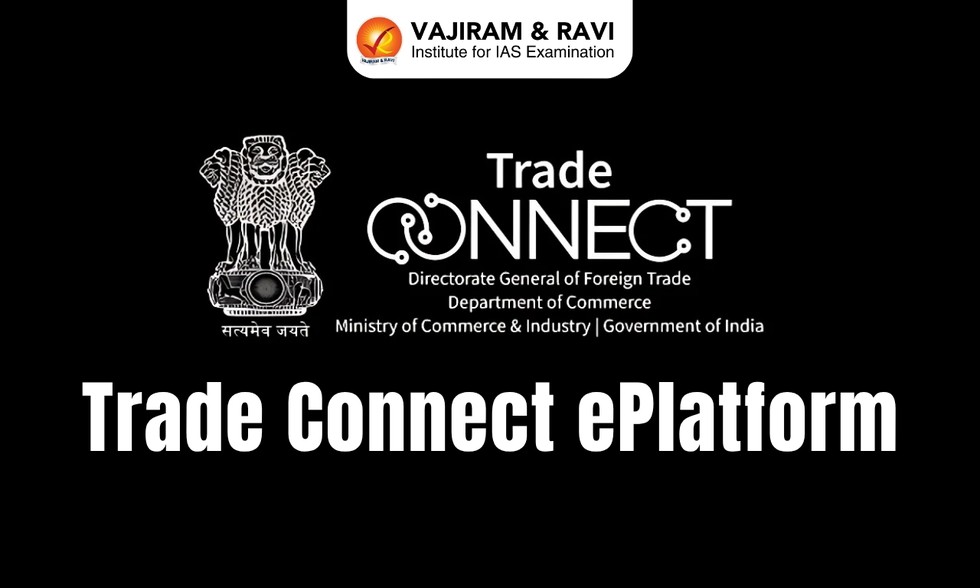
About Trade Connect ePlatform:
- It is a new digital initiative aimed at transforming the landscape of international trade for Indian exporters, especially MSMEs (Medium, Small and Medium Enterprises).
- It is an initiative of the Directorate General of Foreign Trade (DGFT) under the Ministry of Commerce and
- Features of Trade Connect ePlatform
- It serves as a comprehensive hub of information and services on international trade for all stakeholders.
- It will connect Indian Exporters, MSMEs and Entrepreneurs with various stakeholders including Indian Missions Abroad, Export Promotion Councils, and other Partner Government Agencies.
- The platform will provide information on trade events taking place in different parts of the world, benefits available due to India’s Free Trade Agreements (FTAs) and other international trade-related information and data.
- It provides latest and updated information on tariffs, certifications, trade events, eCommerce, and buyers in a simplified manner to MSMEs.
- Interactive courses to introduce MSMEs to exports & related procedures across multiple languages are also provided.
- It also serves a single point of issuance and validation for preferential and non-preferential certificates of origin through a secure, electronic, paperless issuance process with all authorised issuing agencies being present on the platform.
- The platform, developed in collaboration with key partners including the Ministry of MSME, EXIM Bank, Department of Financial Services (DFS), and the Ministry of External Affairs (MEA).
Economy
Current Affairs
July 18, 2025
Akash Prime Missile
Recently, India achieved a significant milestone by successfully destroying two Aerial High Speed Unmanned targets at high-altitude in Ladakh by Akash Prime.
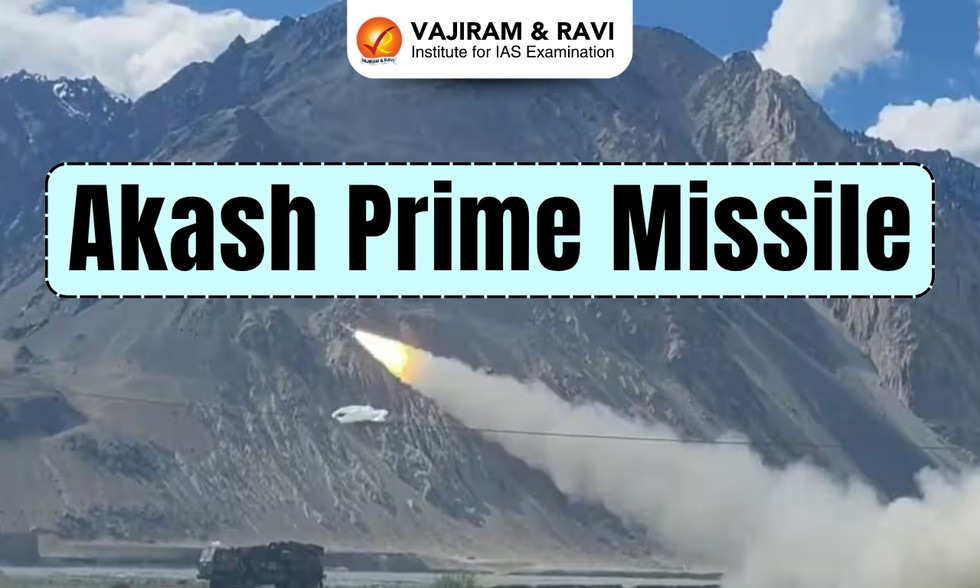
About Akash Prime Missile:
- It is the upgraded variant of Akash weapon for the high altitude region.
- Features of Akash Prime Missile
- It is a medium-range, surface-to-air missile platform.
- It is designed to protect mobile, semi-mobile and static military installations from a range of aerial threats.
- Its key upgrade is an indigenous Radio Frequency seeker. This allows it to beam out radio signals and home in on targets during the final phase of its flight.
- It is capable of targeting objects at a range of around 25 to 30 kilometers.
- Other key enhancements in Akash Prime ensure more reliable performance under low-temperature environments at higher altitudes.
- Akash Prime is engineered for deployment above 4,500 metres.
- These new additions have been made after receiving feedback from armed forces, for the deployment of the system to provide air defence cover for vital installations and sensitive areas in high-altitude regions.
Science & Tech
Current Affairs
July 18, 2025
Ground Penetrating Radar Technology
A team from the Indian Institute of Technology (IIT) Kanpur has discovered signs of ancient Buddhist stupas and structural remains buried beneath the soil in Yamuna Nagar district of Haryana by using advanced Ground Penetrating Radar (GPR) technology.

About Ground Penetrating Radar Technology:
- It is a geophysical method that uses high-frequency electromagnetic pulses to image the subsurface of the Earth or other solid materials.
- It is a non-destructive detection and imaging method which identifies subsurface elements either underground or within a surface such as concrete.
- Working of Ground Penetrating Radar Technology
- GPR uses a transmitter antenna to send high-frequency, pulsed, electromagnetic waves (typically from 10 MHz to 1,000 MHz) into the subsurface to acquire information.
- The wave spreads out and travels downward until it hits a buried object or boundary with different electromagnetic properties
- Part of the wave energy is reflected or scattered back to the surface, while part of the energy continues to travel downward.
- The wave is reflected back to the surface to a receiver antenna that records the amplitude of the reflected energy and the arrival time of the wave on a digital storage device
- Applications of Ground Penetrating Radar Technology
- GPR can detect both metallic and non-metallic objects, giving it a wide range of applications.
- It reveals all types of utilities, including electrical conduit, steam pipes, telecommunications lines, gas & oil lines, water lines, and sewer & storm pipes.
Science & Tech

